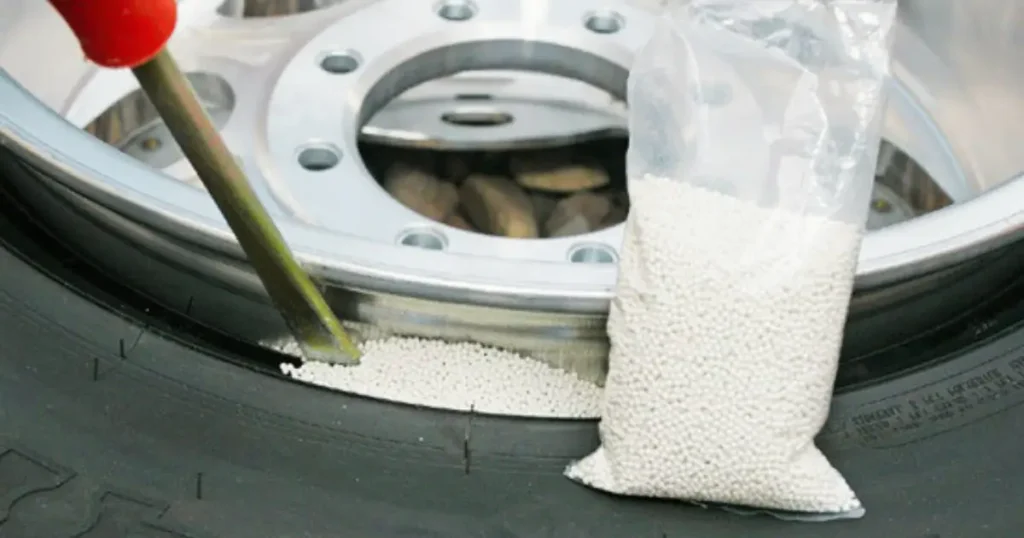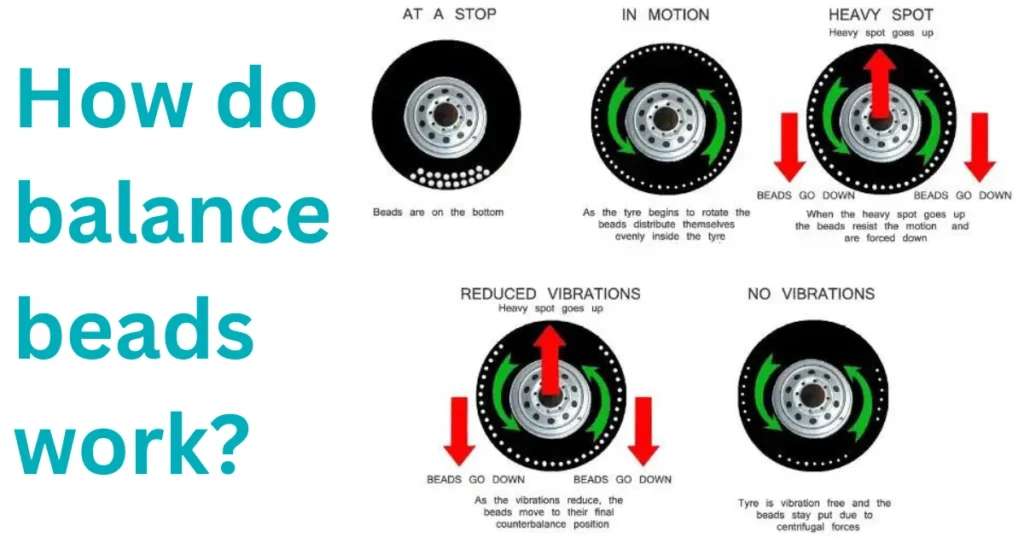The Pros and Cons of Using Tire Balancing Beads: Can You Use Too Many Beads in a Tire?
Tire balancing beads have gained popularity in recent years as a way to improve the performance and lifespan of tires. These small beads, typically made of glass or ceramic, are used to balance the tire and prevent uneven wear.
Today, we will explore the benefits and drawbacks of using tire balancing beads, as well as whether it is possible to use too many beads in a tire.
What are Tire Balancing Beads?
Tire balancing beads, also known as balance beads, are small beads that are placed inside a tire to continuously balance it as the wheel rotates.
These beads work by automatically adjusting their position based on the tire’s movement, ensuring a smooth and balanced ride.

1. How do balance beads work?
The balance beads are typically injected into the tire through the valve stem. Once inside the tire, they are free to move and distribute themselves evenly around the wheel.
As the tire rotates, the beads work to counteract any imbalance, effectively eliminating vibrations and minimizing tire wear.

2. Should you use tire balancing beads?
Using tire balancing beads can provide a cost-effective and convenient solution for balancing tires, as the beads continuously adjust themselves and do not require regular maintenance.
Also can help extend the lifespan of your tires by reducing uneven wear and minimizing vibrations.
3. What are the pros of using tire balancing beads?
There are several benefits to using tire balancing beads:
- They provide a smoother and more comfortable ride by eliminating vibrations. This can greatly enhance the driving experience, especially on long trips or rough roads.
- Balancing beads can help extend the lifespan of tires by reducing tread wear and preventing premature tire failure.
- By ensuring even weight distribution, they also enhance the overall performance and handling of the vehicle.
Can You Use Too Many Beads in a Tire?
While tire-balancing beads can be beneficial, it is important to use the right amount for optimal performance.
Using too many balancing beads can lead to potential issues and may not provide the desired results.
1. What happens if you put too many balancing beads in a tire?
If you put too many balancing beads in a tire, they can create an imbalance instead of correcting it.
The excess beads can clump together and create pockets of uneven weight distribution, leading to vibrations and handling issues.
This can result in an uncomfortable ride and can also cause premature wear on the tire.
2. Can balancing beads be used in any tire size?
Tire balancing beads can be used in a wide range of tire sizes, including commercial tires, off-road tires, truck tires, and even motorcycle tires.
3. What are the potential issues of using too many balancing beads?
Using too many balancing beads can lead to several issues. Apart from creating imbalances and vibrations, excessive beads can also cause damage to the valve stem or valve core.
This can result in air leakage and loss of tire pressure. It is essential to follow the manufacturer’s guidelines and use the right amount of balancing beads for your tire size.
How to Properly Use Balancing Beads?
When using balancing beads, it is important to follow proper installation procedures to ensure optimal performance.
1. Where should balancing beads be placed inside the tire?
Tire balancing beads should be placed inside the tire cavity for maximum effectiveness. The size of the tire will determine the amount of beads required.
It is recommended to consult a tire shop or the manufacturer’s guidelines to determine the right amount of beads for your tire.
2. How to install balancing beads onto the valve stem?
To install balancing beads, the tire should be properly mounted on the rim. The valve stem should be positioned at the top, and the beads can be injected through the valve stem using a dedicated valve stem installation tool.
3. Can balancing beads be used with smaller tires?
Yes, balancing beads can be used with smaller tires. However, it is essential to ensure that there is enough room in the tire cavity for the beads to move freely and distribute evenly. Smaller tires may require fewer beads compared to larger tires.
Alternatives to Balancing Beads
While balancing beads can provide an effective solution for tire balancing, there are alternative methods available.
1. What are balancing rings and how do they work?
Balancing rings are another option for tire balancing. These rings are mounted on the rim of the wheel and provide a static balance.
They work by equalizing the weight distribution around the wheel, reducing vibrations, and improving overall tire performance.
2. What other methods can be used to balance tires?
Other methods of balancing tires include using traditional wheel weights or mechanical balancers.
These methods involve attaching weights to the rim of the wheel to achieve a balanced rotation.
3. Are there any drawbacks to using balancing beads?
While balancing beads can provide effective tire balancing, there are a few drawbacks to consider.
- If the beads are not properly installed, they may not distribute evenly and can cause imbalances.
- Some off-road enthusiasts prefer not to use balancing beads, as they believe it can interfere with the tire’s ability to flex and conform to the ground surface.
